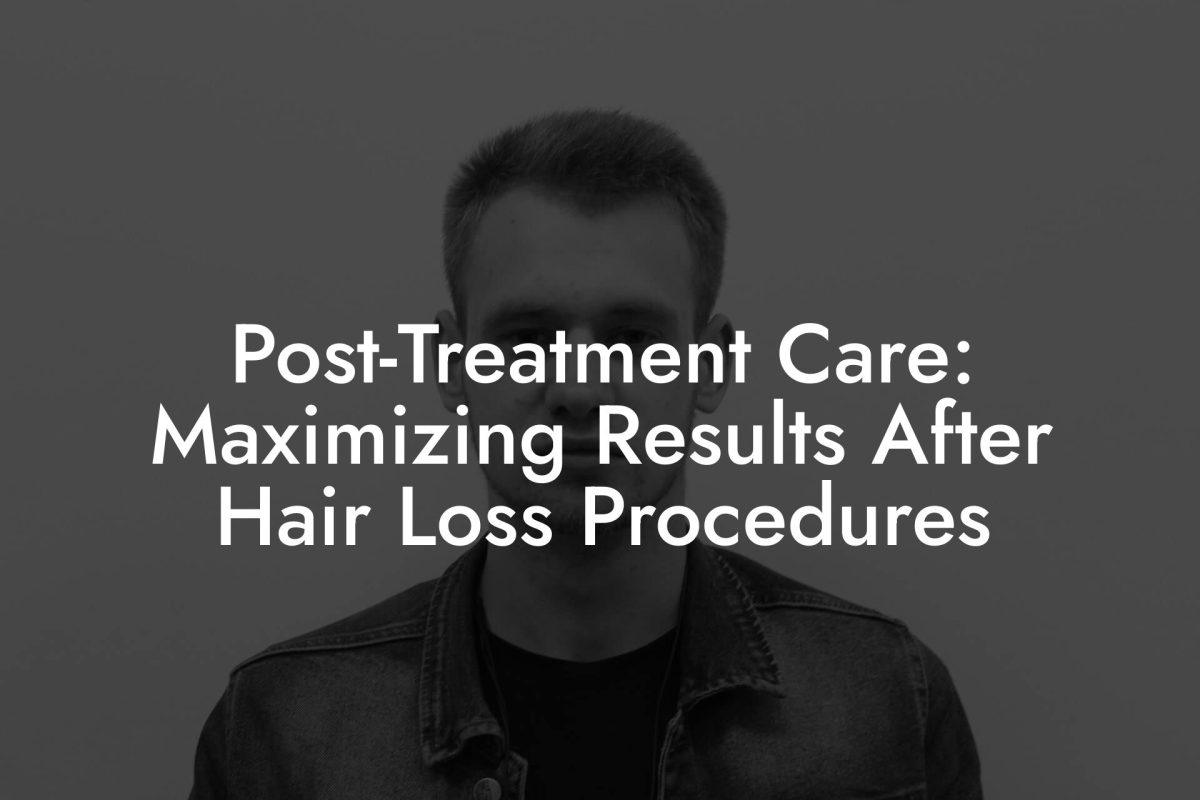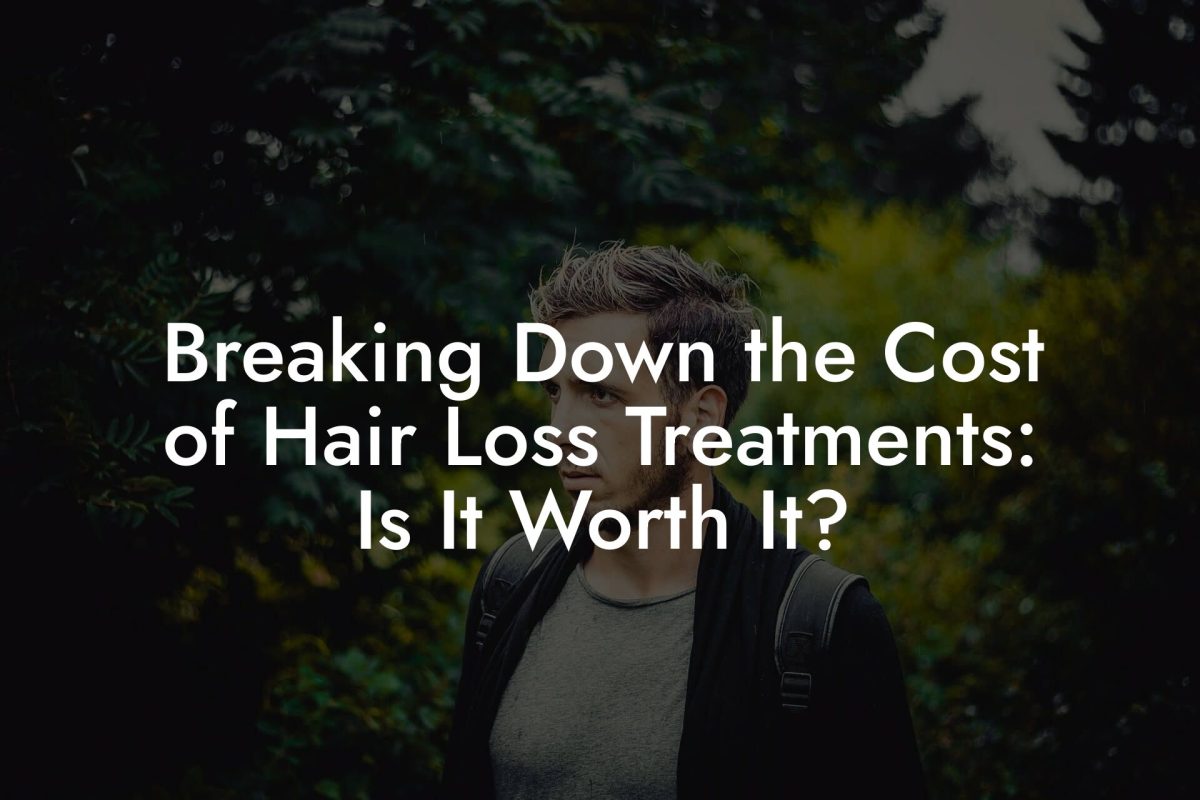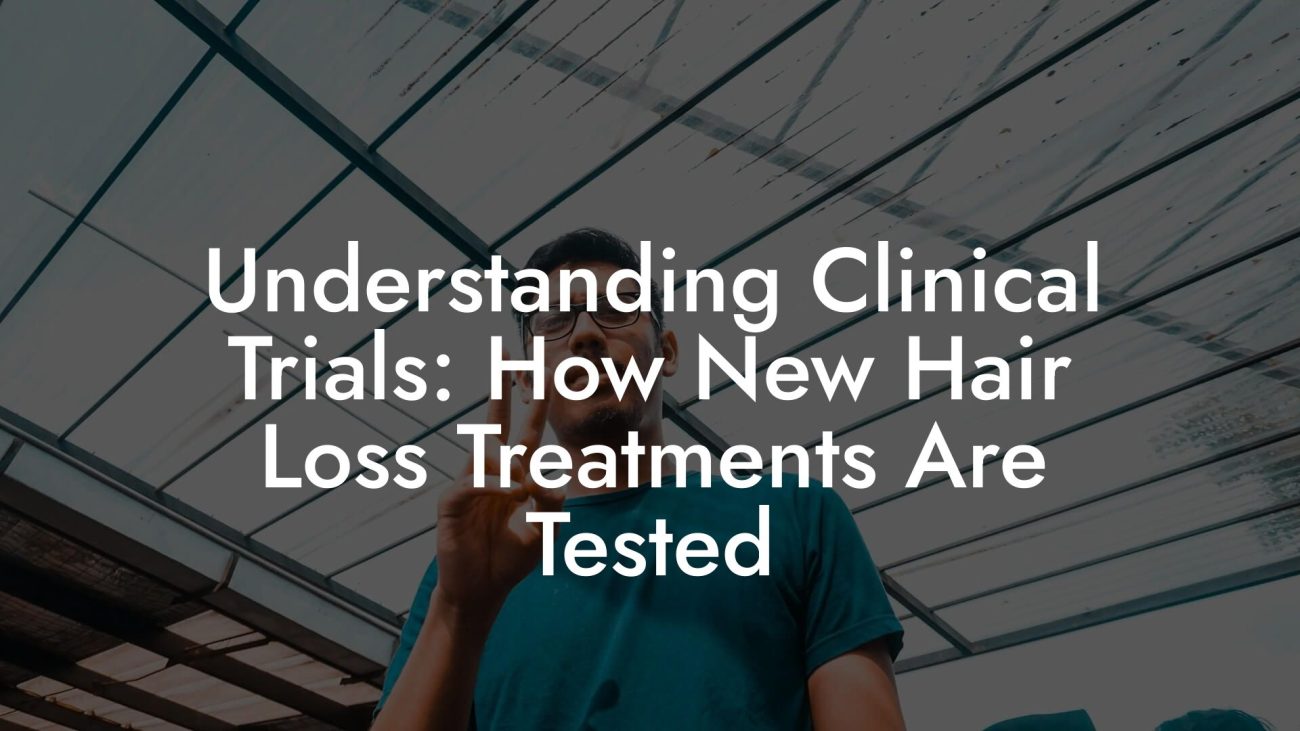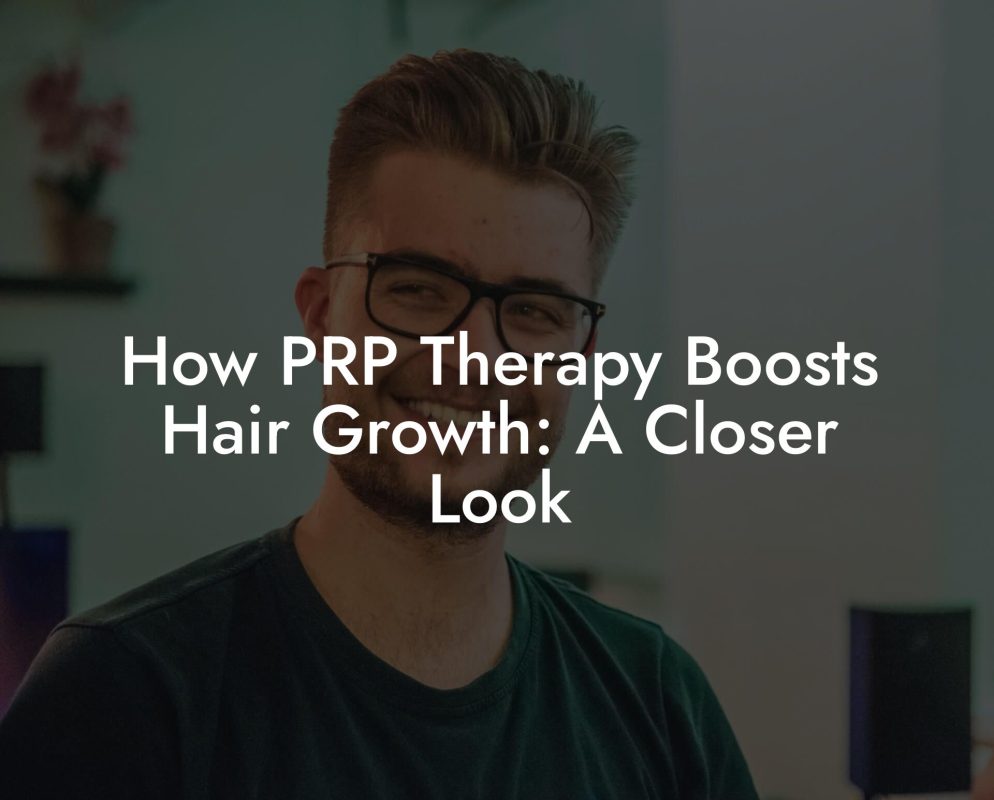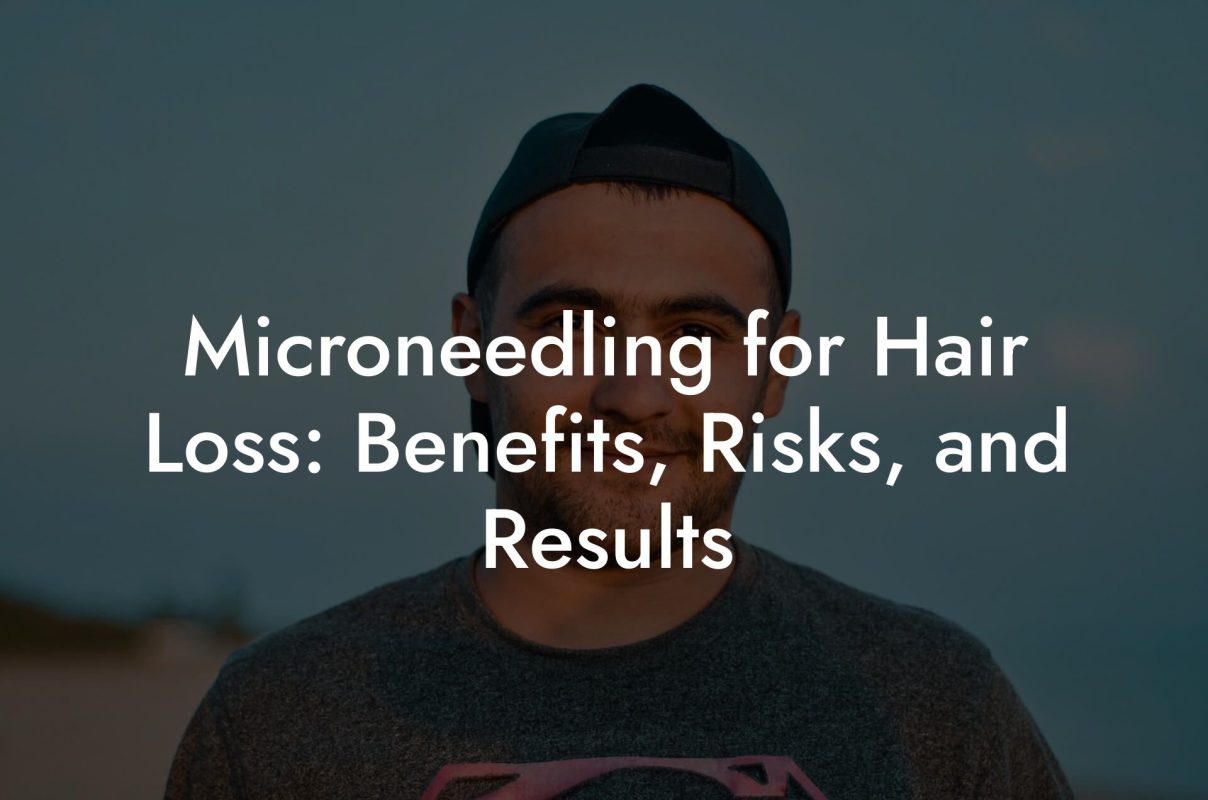Hair Loss Library
How Finasteride Works: The Science Behind This Hair Loss Blocker
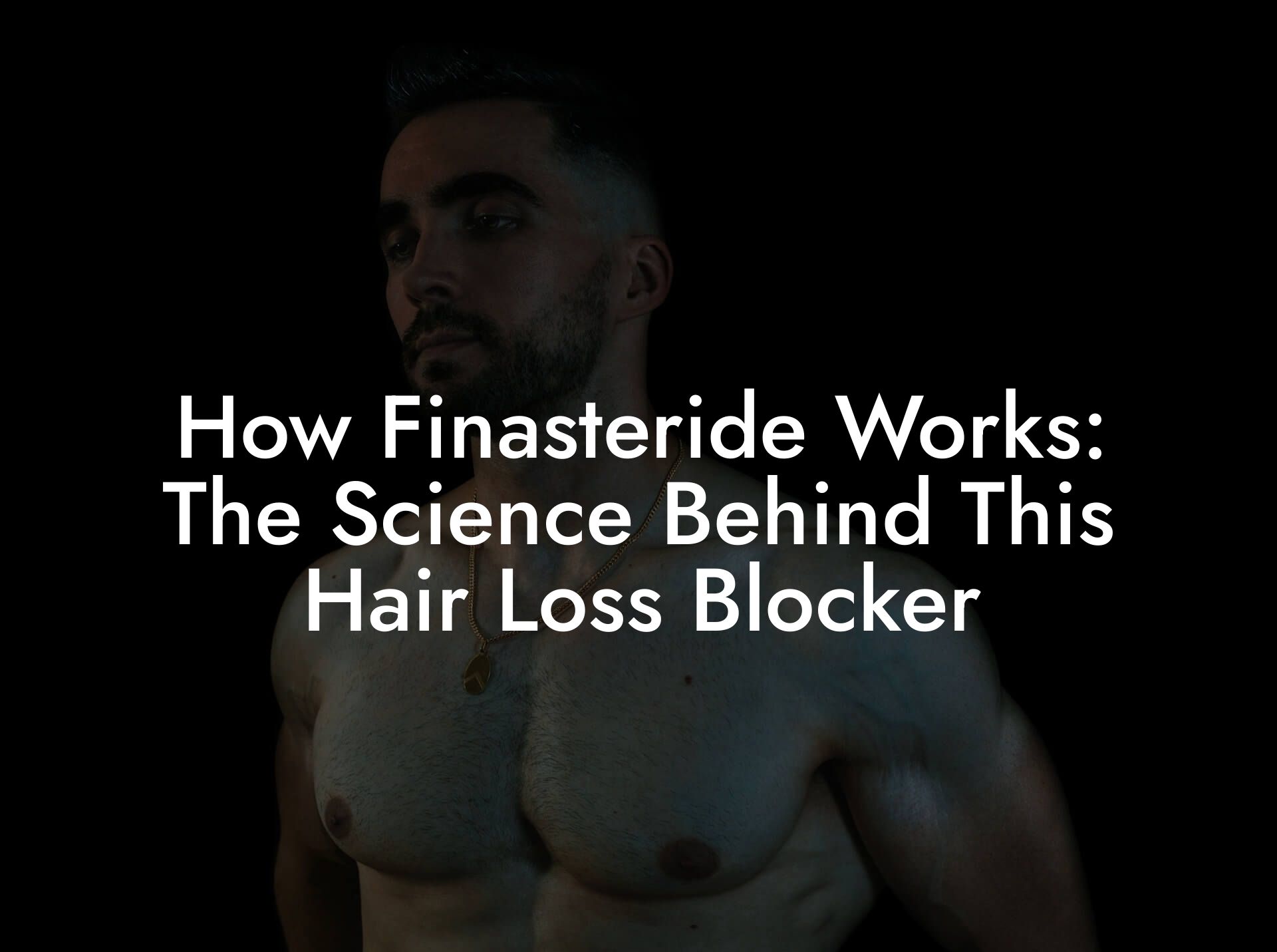
Ever wondered how that little white pill known as Finasteride can seemingly stop your hair from taking a nosedive, even as you battle those unpredictable life moments? Buckle up, because we're about to dive into the science behind this hair loss blocker in a way that's as fun and engaging as scrolling through your favorite meme feed. Whether you're a millennial or a Gen Z warrior fighting the battle against thinning hair, our expert breakdown will leave you feeling like you've unlocked the secret algorithm to hair regrowth—minus the cringe-worthy doctor visits and expensive consultations.
Understanding the Hair Loss Hustle: The Basics
Let’s face it: hair loss isn’t just about losing strands—it’s about the sudden realization that your once-young mane might be bidding farewell. Whether you’re noticing more hair in the shower drain or your selfies seem to be capturing more scalp than ever before, hair loss is a real-life plot twist that nobody asked for. But why does it even happen? The short answer: it all comes down to a pesky hormone called dihydrotestosterone, or DHT.
DHT is like that overzealous party guest who overstays their welcome, wreaking havoc on your hair follicles. As a derivative of testosterone, DHT binds to these follicles, causing them to shrink over time—a process known as miniaturization. This gradual shrinkage means your once-thick hair eventually becomes fine and sparse, leading to the phenomenon known as androgenetic alopecia—or more colloquially, male pattern baldness.
In essence, understanding hair loss starts with understanding the influence of hormones. And when it comes to managing this hormonal mayhem, Finasteride steps into the ring as a champion, ready to block DHT from overstaying its welcome.
The Science Behind Finasteride: How It Works
At its core, Finasteride is a medication designed to inhibit the enzyme 5-alpha reductase. This enzyme is the mastermind behind converting testosterone into DHT. Picture it as an over-enthusiastic hair thief, sneaking into your hair follicles and snatching away their chance at a full life. Finasteride throws a wrench in this process, effectively reducing DHT levels in your scalp.
When you take Finasteride, it targets primarily Type II 5-alpha reductase, the isoenzyme that plays the dominant role in hair loss. By decreasing DHT levels, Finasteride helps slow down, or even partially reverse, the miniaturization of hair follicles. With DHT kept in check, the follicles get a chance to stay in the game and continue producing stronger, thicker strands. It’s like sending in reinforcements to defend your hairline from the hormonal siege.
In scientific terms, this process is backed by robust research and clinical trials, proving that Finasteride isn’t just another trendy pill—it’s a proven method to tackle the root cause of male pattern hair loss. And while the exact magic may seem like alchemy, the science is straightforward: reduce the DHT flood, and your hair follicles stand a much better chance at survival.
Decoding the Mechanism: Blocking DHT for Better Tresses
To really get what Finasteride does, imagine your hair follicles as tiny, delicate flower pots. DHT, in all its hormonal glory, acts like a relentless weed killer. Instead of nurturing your precious blooms, it obstructs the growth process, leaving you with a barren garden. Finasteride steps in to neutralize these “weed seeds” by preventing the formation of DHT, thereby preserving the integrity of your follicular garden.
Without a surplus of DHT, your hair follicles are less prone to miniaturization. This means that over time, with consistent use, you'll likely notice a stabilization—or even an improvement—in hair density. This isn’t an overnight miracle; think of it more as a long-term investment in your crowning glory. The key lies in sustained treatment, where every day without excessive DHT contributes to a healthier scalp environment.
For those juggling multiple responsibilities and battling stress-induced hair woes, Finasteride provides a beacon of hope—a scientifically backed solution that can restore your faith in your hair’s future.
The Evolution of Finasteride: From Novel Solution to Mainstream Savior
Believe it or not, Finasteride wasn’t always the poster child for hair loss treatments. Its original breakthrough came when it was primarily used to treat benign prostatic hyperplasia (BPH), a condition affecting the prostate. Researchers were intrigued by its enzyme-blocking capabilities, and soon, they noticed that men taking Finasteride for BPH reported unexpected side benefits—namely, the halting or reversal of hair loss.
This serendipitous discovery sparked a revolution in dermatology and trichology. Finasteride made its big debut as a hair loss treatment, supported by a plethora of studies demonstrating its effectiveness in reducing scalp DHT levels. Over time, it became clear that this medication wasn’t just a one-trick pony—it offered a tangible solution for many men struggling with the emotional and physical effects of thinning hair.
Today, Finasteride is celebrated not only for its ability to slow down hair loss but also for its role in potentially regrowing hair. With millions of users worldwide, its story is a prime example of how medical research can pivot to address real-world issues, transforming initially unexpected side effects into life-changing benefits.
Modern Myths and Misconceptions: Setting the Record Straight
When it comes to Finasteride, the internet is rife with myths and half-truths that can make even the savviest of netizens skeptical. Let’s bust some of these myths wide open:
Myth 1: Finasteride Will Instantly Restore Your Hair
If you’re expecting a magic wand to wave away your hair loss overnight, you’re in for a reality check. Finasteride works gradually. Consistent use over several months is necessary before you can see tangible changes. Think of it as planting a seed—you need a little time and care before you enjoy a full bloom.
Myth 2: Finasteride Is Only for Balding Old Men
Let’s debunk this one: hair loss doesn’t discriminate by age. Although male pattern baldness tends to be more pronounced with age, even younger men experiencing early hair thinning can benefit from Finasteride. The key is early intervention and maintaining realistic expectations about the results.
Myth 3: All Hair Loss Treatments Are Created Equal
Not so fast. While there are many treatments on the market, Finasteride has undergone rigorous clinical testing specific to its role as a 5-alpha reductase inhibitor. Its targeted action on DHT sets it apart from generic hair growth products that may lack scientific substance.
Myth 4: Finasteride Causes Drastic Side Effects
Like any medication, Finasteride can have side effects, but most are relatively rare and reversible upon discontinuation of the drug. It’s worth noting that the vast majority of users do not experience severe adverse effects, and when they do, it’s typically a temporary hurdle rather than a life-altering condition.
Dispelling these myths helps empower you with factual information, ensuring that your decision about using Finasteride is based on solid science rather than viral misinformation.
How to Use Finasteride: Dosage, Administration, and Best Practices
So, you’re sold on Finasteride and ready to give it a go. But how do you incorporate it into your daily routine without turning it into a chore? Let’s break down the best practices:
Proper Dosage Matters
Prescription Finasteride for hair loss typically comes in a 1-milligram dose taken once a day. While it might be tempting to experiment with dosages, sticking to your doctor’s recommended amount is essential for both safety and effectiveness.
Consistency Is Key
Just like your favorite Spotify playlist that never fails to set the mood, consistency with your Finasteride regimen is critical. Results take time—usually several months—so it’s important to stay committed day in and day out.
Partner It with a Healthy Lifestyle
Don’t let Finasteride be the lone hero in your hair care saga. Pair it with a balanced diet, regular exercise, and proper scalp care (yes, that includes washing and conditioning!). A holistic approach to hair health amplifies the benefits of Finasteride, giving your follicles fighting chance to thrive.
Monitor Your Progress
Keeping tabs on your progress can be both motivating and instructive. Snap a “before” picture, set reminders, and track your hair growth journey regularly. This not only builds a case study for your own evidence but also helps you catch any potential side effects early on.
Remember, the road to hair regrowth isn’t paved with instant results—it’s a slow and steady journey that rewards consistency, proper care, and a well-rounded lifestyle.
Integrating Finasteride with Other Hair Loss Strategies
While Finasteride is a powerful tool in the fight against hair loss, it’s not a one-stop shop. Think of it as the lead guitarist in your hair care band—vital, but best when accompanied by an equally talented band of complementary strategies.
Minoxidil: The Dynamic Duo
You might have heard of Minoxidil, another well-known player in the battle for hair regrowth. When used in tandem with Finasteride, Minoxidil can provide additional support by stimulating hair growth directly at the follicle. While Finasteride curtails the DHT assault, Minoxidil works on enhancing blood flow and nutrient delivery. Together, they create a synergistic approach that many users find remarkably effective.
Platelet-Rich Plasma (PRP) Therapy
PRP therapy is another exciting frontier in hair restoration. This cutting-edge treatment involves using your own plasma, rich in growth factors, to stimulate damaged hair follicles. For those who prefer a more natural approach (or want to boost Finasteride’s effects), PRP offers a promising complementary strategy.
Laser Therapy and Low-Level Light Therapy (LLLT)
Break out the LED gadgets—laser and low-level light therapy are gaining traction as non-invasive methods to revitalize hair follicles. These treatments use specific wavelengths of light to enhance cellular activity and blood flow. When combined with Finasteride, LLLT can help create an optimal environment for hair regrowth.
The takeaway? A multi-pronged approach often yields the best results. Finasteride is a solid foundation, but pairing it with other scientifically backed methods can supercharge your hair growth journey.
Navigating Side Effects: What to Expect and How to Manage Them
No superhero comes without a few side effects, and Finasteride is no exception. While it’s generally considered safe for most men, being aware of potential side effects is crucial for informed decision-making.
Common Side Effects
Some users report side effects such as a decrease in libido, mild erectile dysfunction, or mood fluctuations. The good news? These effects are typically low in frequency and often subside once your body adjusts to the medication. Always remember: your body is as unique as your Netflix recommendations, so responses can vary widely from person to person.
Managing and Mitigating Risks
Communication is key. If you notice any persistent or bothersome side effects, consult your healthcare provider. They might adjust your dosage or suggest alternative treatment strategies to help balance your hormones without compromising your hair’s future. Staying informed and proactive about your health can make a world of difference.
It’s also helpful to track your experiences. Maintaining a health journal or using an app to note any changes can not only provide reassurance but also serve as valuable data to share with your doctor.
Research and Future Directions: The Next Chapter in Hair Loss Science
The field of hair loss research is as dynamic as a trending TikTok challenge, with new discoveries and innovations emerging almost daily. Finasteride paved the way, but it’s clear that the future holds even more promising developments.
Researchers are currently diving deep into the genetic markers that predispose individuals to hair loss, seeking targeted therapies that work on a molecular level. Simultaneously, advanced topical formulations and oral medications are being tested to optimize results while minimizing side effects.
One exciting area is the exploration of combination therapies—merging the pharmacological benefits of Finasteride with novel compounds that enhance follicle viability. Biotechnology companies are even experimenting with regenerative treatments that leverage stem cells and growth factors. If these cutting-edge treatments deliver on their promise, the future of hair restoration could be nothing short of revolutionary.
For those of you keeping up with the latest in science and technology, staying informed about these trends can give you a glimpse into what tomorrow’s hair care regimen might look like. And hey, if you’re ever in need of a hair care upgrade, you’ll be at the forefront of the next big thing.
Real-Life Transformations: Stories from the Mane Matrix Community
It’s one thing to understand the science behind Finasteride, but it’s entirely another to see it in action. Across the globe, countless men have experienced firsthand how Finasteride can be a game-changer. Here are a few stories from our vibrant Mane Matrix community:
A Journey to Regain Confidence
Jake, a 29-year-old software developer, noticed his hairline receding just as he was preparing for a big career move. Worried about his appearance and its impact on his self-esteem, he turned to Finasteride. After six months of consistent use, not only did his hair loss slow dramatically, but he even reported a subtle regrowth around his temples. For Jake, the benefits went beyond aesthetics—regaining confidence in his professional and personal life was the real win.
Beating the Genetic Odds
Then there’s Luis, whose family history of baldness was practically a rite of passage. Luis decided to battle the genetic predisposition with Finasteride and a side of Minoxidil, complemented by a healthy lifestyle overhaul. Over time, his persistence paid off. He not only maintained a full head of hair but also developed an appreciation for a holistic approach to wellness that extended far beyond his hair.
Turning the Tide in the Face of Early Thinning
Finally, consider Aaron, a 35-year-old creative freelancer who began noticing his once-luscious locks thinning during stressful project deadlines. Skeptical at first but fueled by desperation and a dash of curiosity, he integrated Finasteride into his routine. Coupled with stress-management techniques like meditation and regular exercise, Aaron’s hair thinning halted, and in some areas, even reversed. His journey is a powerful reminder that early intervention can rewrite your hair’s destiny.
These stories aren’t just anecdotes—they’re a testament to the real-world impact of a scientifically grounded approach to hair loss. Each transformation, no matter how small, is a victory in the broader battle against hair loss.
Resources and Community Support: Your Next Steps
Navigating the hair loss maze can sometimes feel like deciphering an ancient script. That’s why connecting with a supportive community and accessing reliable resources is essential. At Mane Matrix, we’re dedicated to offering expert insights, curated tips, and community-driven success stories that serve as a beacon for anyone tackling hair loss.
Here are some actionable next steps:
- Join online forums and social media groups: Engage with fellow hair care enthusiasts who share personal tips, product reviews, and motivational stories to keep you inspired on your journey.
- Consult with expert trichologists: Get personalized advice without the hassle of expensive and embarrassing consultations. Our experts are ready to answer your burning questions about hair health.
- Access exclusive webinars and workshops: Stay ahead of the curve by participating in virtual events hosted by industry professionals who break down the science of hair loss and its latest treatments in an easy-to-understand way.
- Keep up with the latest research: Follow reputable scientific journals and news outlets to be the first to know about breakthrough treatments and new developments in hair restoration.
Taking proactive steps not only empowers you to make informed choices but also connects you with a supportive community ready to cheer you on. Whether you’re just beginning your journey or have been fighting hair loss for years, these resources can offer both guidance and solidarity.
Your Personalized Blueprint to a Healthier Mane
Crafting a personalized hair restoration plan is as unique as each strand on your head. The science behind Finasteride, coupled with complementary strategies like proper nutrition, stress management, and alternative therapies, forms the foundation of a tailored approach to hair loss.
Here’s how you can build your blueprint:
Step 1: Assess Your Hair Health
Take stock of your hair’s current condition. Document the extent of thinning through photos and note any lifestyle factors—like stress levels or dietary habits—that might contribute to hair loss.
Step 2: Define Your Hair Goals
Be realistic and specific about what you want to achieve. Do you aim to maintain your current hair density, or are you hoping to see regrowth in specific areas? Clear goals help steer your treatment plan effectively.
Step 3: Build a Multi-Pronged Regimen
Combine Finasteride with other complementary treatments, such as Minoxidil, nutritional optimization, and stress-reducing exercises like yoga or meditation. This comprehensive strategy ensures that every aspect of your health contributes to your hair’s vitality.
Step 4: Monitor and Adapt
Keep a detailed log of your progress, noting not just improvements but also any side effects or setbacks. This data not only motivates you but also guides necessary tweaks in your regimen.
Remember, your journey to a healthier mane isn’t linear. It’s a dynamic process that evolves as your lifestyle and body change. With persistence, an informed approach, and community support, you’re well on your way to transforming your hair health.
Finasteride and You: A Partnership for Confidence
At the end of the day, embracing Finasteride is about more than just fighting hair loss—it’s about reclaiming your confidence. For many, the journey begins with curiosity and a touch of skepticism, only to evolve into a powerful testament to the benefits of targeted, science-driven care.
Finasteride offers a practical, proven solution that allows you to take control of your hair’s future. With its ability to reduce DHT and support hair follicle health, it becomes a pivotal part of your overall strategy to feel your best, inside and out.
And while every journey is personal, one thing is clear: when backed by science and supported by community, hope—and hair regrowth—is just around the corner.
Hair Loss FAQs: Your Burning Questions Answered
We’ve compiled a list of frequently asked questions to clear up any lingering doubts about Finasteride and its role in managing hair loss.
1. How exactly does Finasteride work?
Finasteride works by inhibiting the 5-alpha reductase enzyme, which is responsible for converting testosterone into DHT. With lower DHT levels, hair follicles are less likely to miniaturize, helping to slow or reverse hair loss.
2. How long does it typically take to see results?
Results vary by person, but most users report noticeable improvements after about three to six months of consistent daily use.
3. Are there any significant side effects?
While side effects can include a temporary decrease in libido or mild mood changes, they are generally uncommon and resolve once the body adjusts—or if the medication is discontinued.
4. Can I use Finasteride if I’m experiencing mild hair thinning?
Absolutely. Early intervention is key to preventing further hair loss, and many users find that starting treatment at the onset of thinning offers the best long-term results.
5. Is Finasteride effective when combined with other treatments?
Yes, many users enhance its effectiveness by combining it with other treatments like Minoxidil, PRP therapy, or lifestyle adjustments such as improved nutrition and stress management.
6. Will my hair loss resume if I stop taking Finasteride?
In many cases, stopping Finasteride can lead to a reversal of the treatment’s gains, as DHT levels may rise again. Consistent ongoing use is key to maintaining your results.
Your Next Chapter: Embrace the Science and Own Your Journey
Now that you’re armed with the scientific lowdown on Finasteride, it’s time to embrace your hair restoration journey with confidence and a splash of humor. Remember, while the battle against hair loss might seem daunting, you’re not fighting alone—an entire community of like-minded individuals is cheering you on, armed with cutting-edge science and proven strategies.
Whether you decide to integrate Finasteride into your regimen as a standalone treatment or as part of a broader, holistic approach, the power to reclaim your confidence lies in your hands. Trust in the process, stay consistent, and let modern science work its magic on your mane.
Here’s to a future where your hair, your style, and your confidence are in perfect sync. Welcome to the revolution in hair loss management—your journey to a fuller, healthier head of hair starts now!
If you loved this article... Dive deeper into the world of mens hair loss with our most popular sections. If there is anything you think is missing or anything you would love for us to write about, just give us a shout.
Prescription Solutions: The Best Medications for Men’s Hair Loss
Minoxidil & Beyond: Exploring Topical Treatments for Hair Regrowth
How Finasteride Works: The Science Behind This Hair Loss Blocker
Platelet-Rich Plasma (PRP) Therapy: Is It the Answer to Hair Loss?
Hair Transplant 101: A Beginner’s Guide for Men
Exploring Laser Therapy: Non-Invasive Options for Hair Regrowth
The Pros and Cons of Oral Hair Loss Medications
New Frontiers in Hair Loss Treatment: Stem Cell Therapy Explained
Surgical vs. Non-Surgical: Which Hair Loss Treatment Is Right for You?
Understanding Combination Therapy for More Effective Hair Regrowth
How to Choose the Right Hair Loss Clinic: Expert Tips
Exploring Off-Label Treatments: What’s Worth Trying for Hair Loss?
Managing Side Effects: What to Expect from Hair Loss Medications
The Latest in Hair Loss Research: Emerging Medical Treatments
Microneedling for Hair Loss: Benefits, Risks, and Results
How PRP Therapy Boosts Hair Growth: A Closer Look
The Role of DHT in Hair Loss and How Medications Counteract It
Customized Treatment Plans: Tailoring Hair Loss Solutions for You
Understanding Clinical Trials: How New Hair Loss Treatments Are Tested
Breaking Down the Cost of Hair Loss Treatments: Is It Worth It?
How to Prepare for a Hair Transplant: A Step-by-Step Guide
Post-Treatment Care: Maximizing Results After Hair Loss Procedures
A Doctor’s Perspective: When to Consider Medical Hair Loss Treatments
Success Stories: Real Men Share Their Hair Restoration Journeys
The Future of Medical Hair Loss Solutions: Trends to Watch








